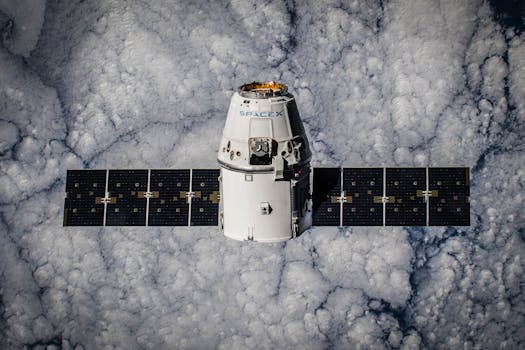Future of Satellites: Advancements and Innovations in Space Technology

Future of Satellites: Advancements and Innovations in Space Technology
The future of satellites is rapidly evolving with advancements in space technology, enabling improved communication, navigation, and Earth observation. As we look to the future, it is clear that satellites will play an increasingly important role in our daily lives, from providing high-speed internet access to monitoring the environment and predicting weather patterns. In this article, we will explore the latest innovations and developments in the satellite industry and examine the potential impact of these advancements on our future.
Future of satellites is an exciting and rapidly evolving field, with new technologies and innovations being developed all the time. One of the most significant advancements in recent years has been the development of small satellites, also known as CubeSats. These tiny satellites are smaller than a shoebox and weigh less than 3 pounds, making them much cheaper to launch and operate than traditional satellites. Despite their small size, CubeSats are capable of performing a wide range of tasks, from Earth observation to communication and navigation.
Advancements in Satellite Technology
Another area of innovation in the satellite industry is the development of advanced propulsion systems. Traditional satellites use chemical propulsion systems, which are heavy and inefficient. Newer propulsion systems, such as electric propulsion and advanced ion engines, are being developed to improve the efficiency and maneuverability of satellites. These advancements will enable satellites to change orbit more quickly and efficiently, reducing the time and cost of launching and operating satellites.
In addition to advancements in propulsion systems, there are also significant innovations being made in the area of satellite materials and design. New materials, such as advanced composites and nanomaterials, are being developed to improve the strength and durability of satellites. These materials will enable satellites to withstand the harsh conditions of space for longer periods, reducing the need for maintenance and replacement.
Innovations in Satellite Applications
Future of satellites is not just about the technology itself, but also about the applications and services that satellites enable. One of the most significant areas of innovation is in the field of Earth observation. Satellites are being used to monitor the environment, track weather patterns, and predict natural disasters. Newer satellites are equipped with advanced sensors and cameras, which enable them to collect high-resolution images and data about the Earth’s surface.
Another area of innovation is in the field of communication. Satellites are being used to provide high-speed internet access to remote and underserved communities. Newer satellites are equipped with advanced transponders and antennas, which enable them to transmit and receive data at much faster rates than traditional satellites. This has significant implications for the development of rural and remote areas, where access to high-speed internet is limited.
Challenges and Opportunities
Despite the many advancements and innovations in the satellite industry, there are also significant challenges and opportunities that must be addressed. One of the most significant challenges is the issue of space debris. As more satellites are launched into orbit, the risk of collisions and debris increases. This has significant implications for the safety and sustainability of space operations.
Another challenge is the issue of regulation and governance. As the satellite industry continues to evolve and grow, there is a need for clear and consistent regulations and standards to ensure the safe and responsible use of space. This includes issues such as licensing and permitting, spectrum allocation, and environmental impact assessment.



